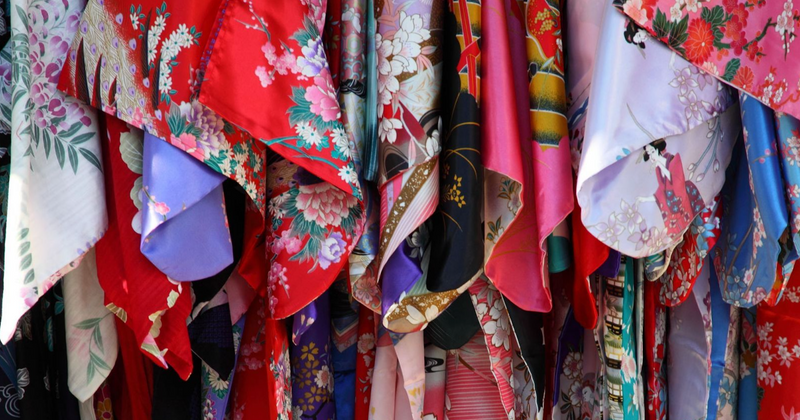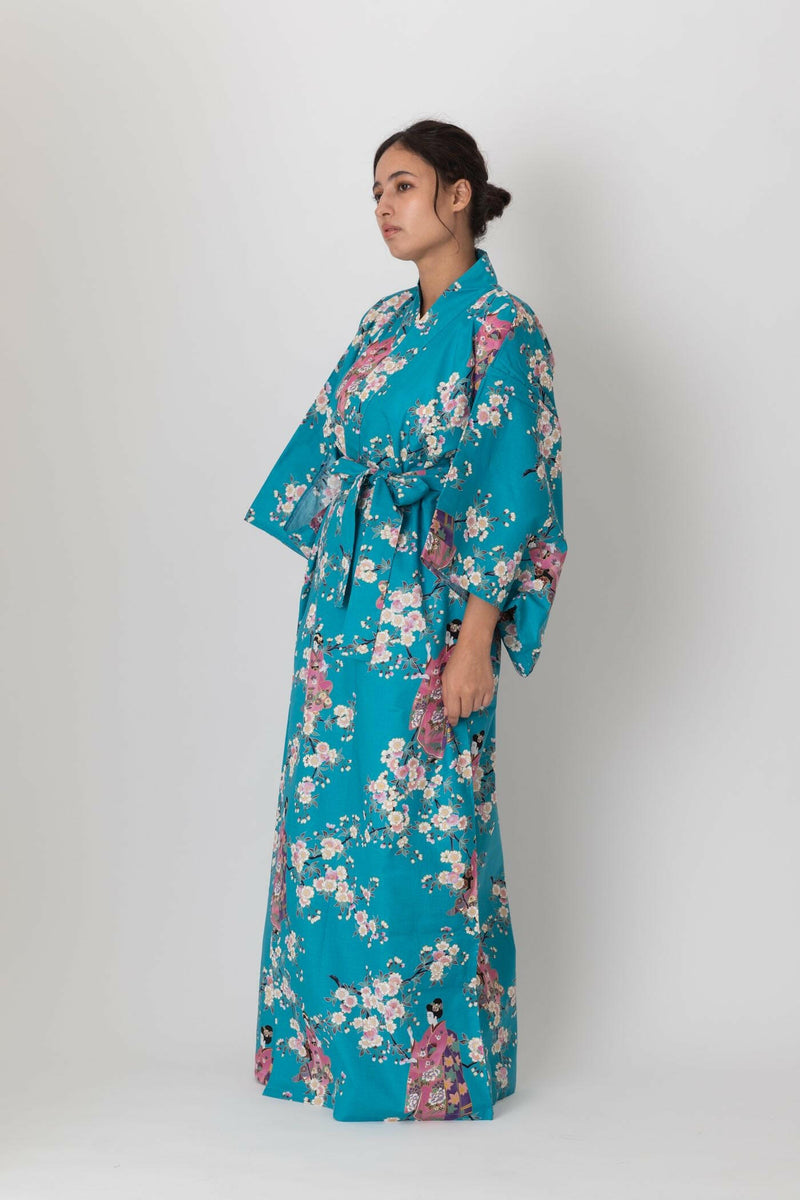
Japanese kimonos often feature a wide range of plants and animals, each with its unique symbolism and significance. Here are some common motifs found on Japanese kimonos and their meanings:
Plants:
-
Cherry Blossoms (Sakura): Sakura represents the transient nature of life and is often associated with the beauty of spring and renewal.
-
Chrysanthemum (Kiku): The chrysanthemum is a symbol of longevity and a prestigious emblem of the Japanese imperial family. It also represents autumn and the sun.
-
Plum Blossoms (Ume): Ume blossoms symbolize endurance and perseverance, as they bloom in the winter, enduring the cold.
-
Bamboo (Take): Bamboo represents resilience and flexibility. It's a symbol of longevity, as it remains green throughout the year.
-
Pine (Matsu): Pine trees are associated with strength and longevity. They are often paired with plum and bamboo in a trio known as "Sho Chiku Bai," representing happiness and good fortune.
Animals:
-
Cranes (Tsuru): Cranes are a symbol of longevity and good fortune. They are often depicted in pairs, representing marital harmony.
-
Koi Fish: Koi fish represent perseverance and determination, as they are known for swimming upstream and overcoming obstacles. They are also associated with good luck and prosperity.
-
Dragons (Ryū): Dragons are powerful and benevolent creatures in Japanese culture, symbolizing strength, protection, and good fortune.
-
Butterflies (ChōChō): Butterflies symbolize transformation, beauty, and the fleeting nature of life.
- Eagle (Washi): Some Japanese myths and legends, eagles are believed to be messengers of the gods or divine creatures. They can symbolize divine guidance and protection.


